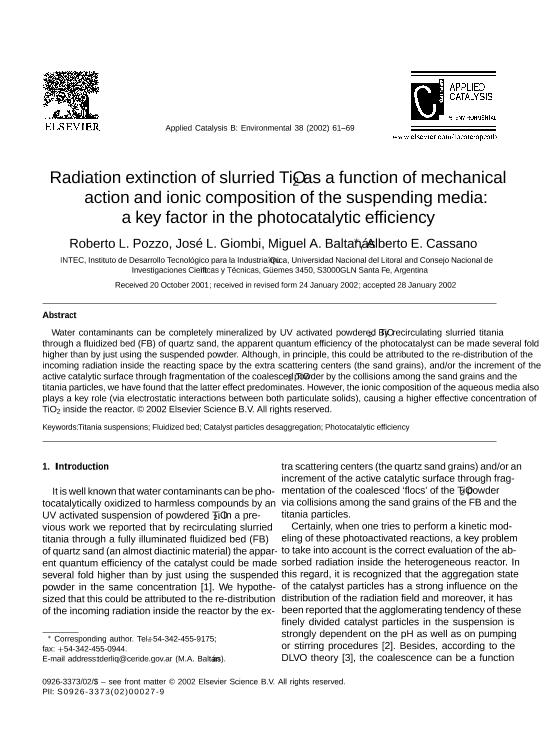Artículo
Radiation extinction of slurried TiO2 as a function of mechanical action and ionic composition of the suspending media: A key factor in the photocatalytic efficiency
Fecha de publicación:
05/2002
Editorial:
Elsevier Science
Revista:
Applied Catalysis B: Environmental
ISSN:
0926-3373
Idioma:
Inglés
Tipo de recurso:
Artículo publicado
Clasificación temática:
Resumen
Water contaminants can be completely mineralized by UV activated powdered TiO2. By recirculating slurried titania through a fluidized bed (FB) of quartz sand, the apparent quantum efficiency of the photocatalyst can be made several fold higher than by just using the suspended powder. Although, in principle, this could be attributed to the re-distribution of the incoming radiation inside the reacting space by the extra scattering centers (the sand grains), and/or the increment of the active catalytic surface through fragmentation of the coalesced TiO2 powder by the collisions among the sand grains and the titania particles, we have found that the latter effect predominates. However, the ionic composition of the aqueous media also plays a key role (via electrostatic interactions between both particulate solids), causing a higher effective concentration of TiO2 inside the reactor.
Archivos asociados
Licencia
Identificadores
Colecciones
Articulos(INTEC)
Articulos de INST.DE DES.TECNOL.PARA LA IND.QUIMICA (I)
Articulos de INST.DE DES.TECNOL.PARA LA IND.QUIMICA (I)
Citación
Pozzo, Roberto Luis; Giombi, Jose Luis; Baltanás, Miguel A.; Cassano, Alberto Enrique; Radiation extinction of slurried TiO2 as a function of mechanical action and ionic composition of the suspending media: A key factor in the photocatalytic efficiency; Elsevier Science; Applied Catalysis B: Environmental; 38; 5-2002; 61-69
Compartir
Altmétricas




